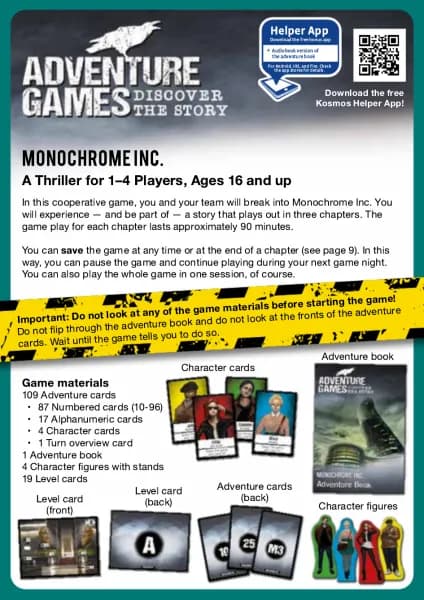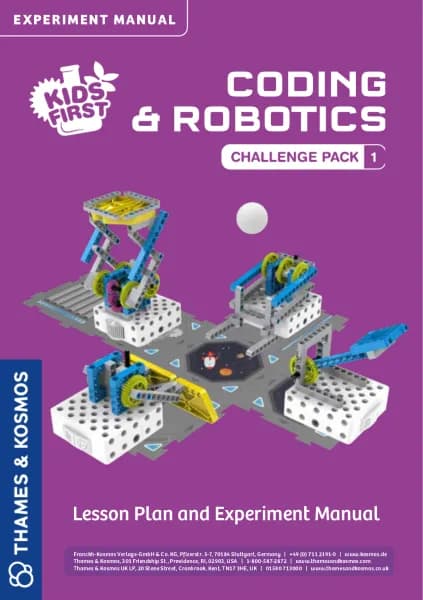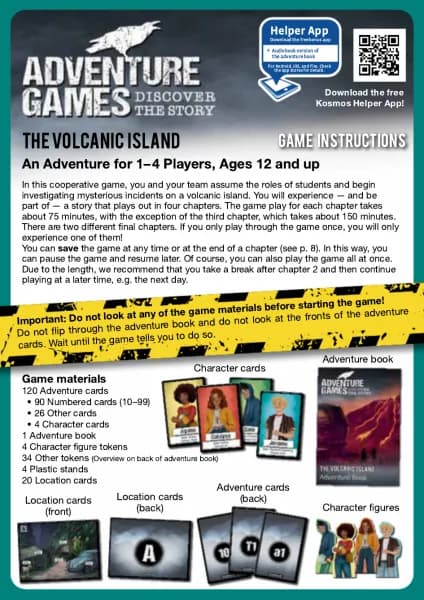Thames & Kosmos Chem C1000 handleiding
Handleiding
Je bekijkt pagina 16 van 19

14
Magic blue and secret inks3
Folding
lines
Safety closure
Dropper insert
press
closing
opening
press
twist
Round lters and lter bags from which
you can trim round lters.
The solution prepared from litmus powder
is ltered.
How the safety closure of the vial for the
litmus solution works. (The actual vial lid
may be black.)
For now, the magic blue is still hidden in the chemical vial
labeled “Litmus powder.” When you open the vial, you will
discover a dark, ne-grained substance inside. To perform
experiments with it, you will need to prepare a litmus
solution, which takes one day. You know: sugar and salt
dissolve in water so easily that it seems as if it disappears.
It’s not quite so easy with the litmus powder. First you need
to become acquainted with one of the most important
laboratory techniques: ltering.
Super-sieves in action
You will need the lter paper sheets from your kit for these
experiments. If you run out of lter paper sheets, you can always
use white coee lters for ltering: either the round ones or the
larger lter bags out of which you can cut round lters (diameter
approx. 10 cm). In the experiments, we will call these lters “lter
paper.”
Additional material: Sand
Fold a round lter paper as shown in
the illustration. You will end up with a
cone consisting of one layer of lter paper on one side and of three
layers on the other. Place the lter cone into the funnel and moisten
it with a little water. This will help it stick better to the wall of the
funnel. In a sealed test tube, shake some sand with about 17 mL of
water (remember, keep your thumb on the stopper!) and pour the mixture into
the lter cone. The sand remains in the lter and a nearly clear liquid, the ltrate,
drips into the test tube below.
Preparing the litmus solution. Place 8 mL of water in a
test tube and add 3 small spoonfuls of litmus powder to
it (level scoop). Close the tube with the stopper, shake
vigorously and allow the closed tube to stand for one day somewhere that is out of
the reach of young children.
Now set up the funnel and lter for ltering like in the previous
experiment. Place the funnel on the vial provided for the litmus solution and pour
the deep-blue mixture into the lter. You can dispose of the insoluble leftovers in
the trash. If denatured alcohol (careful, re hazard!) is available, an adult should add
a half pipette of it to the vial.
EXPERIMENT
01
EXPERIMENT
02
What’s happening here?
Sand is made of small quartz crystals. The particles are difcult to dissolve or not
soluble at all in water and too large to pass through the tiny pores of the lter paper.
In contrast, the particles of water and the soluble substances are so small that they
overcome the “lter blockade” with no trouble. By using super-ne sieves, you can
separate the soluble from the insoluble components of a mixture.
Bekijk gratis de handleiding van Thames & Kosmos Chem C1000, stel vragen en lees de antwoorden op veelvoorkomende problemen, of gebruik onze assistent om sneller informatie in de handleiding te vinden of uitleg te krijgen over specifieke functies.
Productinformatie
| Merk | Thames & Kosmos |
| Model | Chem C1000 |
| Categorie | Niet gecategoriseerd |
| Taal | Nederlands |
| Grootte | 11336 MB |







